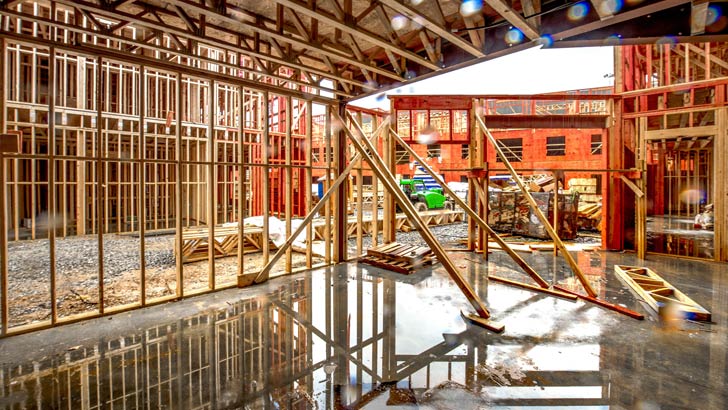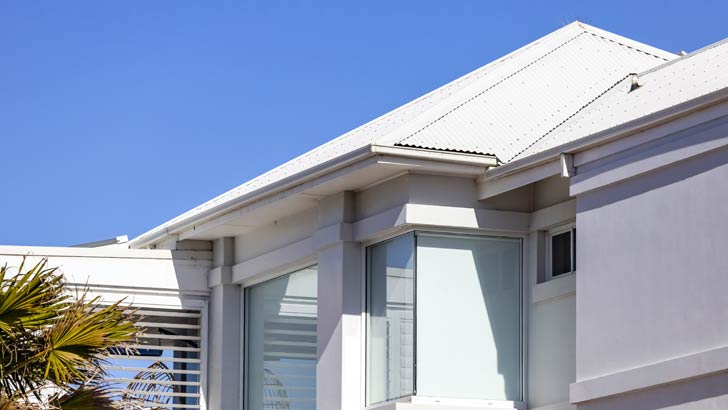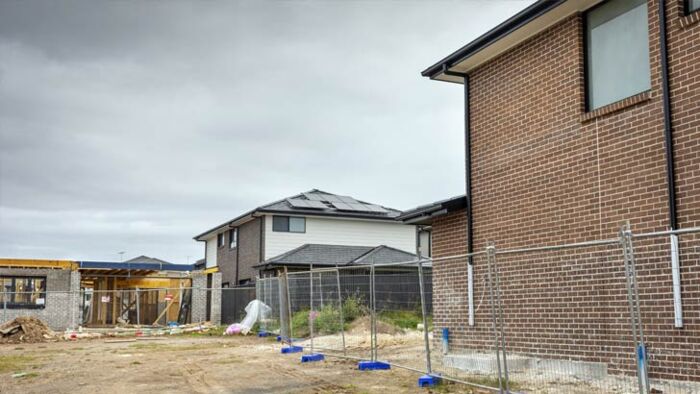Five pitfalls of buying a house off the plan
By Tom Watson
The idea of buying a brand-new house or apartment, particularly one on the more affordable side, may sound like a bit of a pipedream, but it's an idea that attracts plenty of Australian homebuyers to off-the-plan builds and house and land packages each year.
As Lloyd Edge, property expert and director of buyer's agency Aus Property Professionals, explains, the low price point for entry alone is a major selling point for both owner-occupiers and investors, but particularly first home buyers who are trying to break into the market.
"People like the idea of securing something at today's price, so even if it may not settle for a couple of years, they don't need to have a mortgage or be paying interest straight away.
"And obviously being able to secure a property with a 5% deposit or, in some cases, just a $5000 deposit, will be appealing."
Purchasing an apartment off-the-plan, or securing a house and land package, isn't without its potential pitfalls though - pitfalls that budding buyers will want to be aware of before signing on the dotted line.
1. Timelines can blow out
In July 2020, Julian Clarkstone and his partner put a deposit down for a home and land package in a new suburb in Sydney's north-west, electing to sign on with a builder that allowed them to go with a custom design for their home.
Clarkstone says while he initially thought they'd be moving in to their new home in about 12 months, the toing and throwing involved with the builders and the architect during the design process made it clear that the initial timeline wasn't going to be realistic.
"Getting that approved took ages.
"If we just went with the design that was already approved I think they could have got started pretty quickly, but we had to go through a lot of back and forth on tweaks with the design which would have taken eight months. It took way too long and it was pretty frustrating.

"Then the build started not too long after that. There was a lot of rain for a couple of months in early 2021 and flooding out our way though, so they didn't start for ages, and then with COVID there was obviously all sorts of impacts and shortages."
In the end the building work wasn't finished until April 2022, meaning the couple moved in to their new home almost two years after they had signed on.
2. Market conditions can change
Given the time it can take between signing on and settlement, a lot can change in the way of property values and interest rates in the interim - the last year being a prime example of that.
According to Edge, a change in the value of the property or in the home loan rates available can potentially be good or bad depending on the direction they go, but it's a factor buyers should bear in mind when weighing up an off-the-plan property.

"When you're buying something off-the-plan, you're buying at today's prices, but that doesn't actually mean that the value of that property will be the same when it settles. Let's say it takes two or three years to build, often it's perceived that the value of the property will just be higher, but it can be lower.
"So if the valuation of the property from the bank comes in lower than what you actually signed the contract for, then you've got a shortfall which means you will have to pay extra. And for some people, it could mean that they can't actually settle on the property because of the difference between the price of the property and valuation shortfall."
3. The home could be smaller than expected
Changes to building plans are part and parcel of construction, so another point that Edge notes buyers of off-the-plan properties or house and land packages should be aware of are potential changes to the size of the property during construction.
"There's usually a clause in the contract that allows a slight difference in size of the actual property where it could vary by up to 5%. So it could end up being a little bit smaller than what you're signing for. That doesn't necessarily mean that it will happen, but it can be allowed for.

"It's the same when doing a house and land package and you're buying an unlisted block of land. When they start to divide that land there is an allowance of up to 5% for the block size.
"So if you buy a 700 square metre block of land, it may not necessarily turn out to be exactly that - there's an allowance for it to be slightly smaller, or it could be slightly larger."
4. Your design choices may be limited
Purchasing an off-the-plan unit or apartment that's being built from scratch may sound like the perfect opportunity for someone looking to put their own spin on the design of their future home, but as Edge explains, buyers may have limited input.
"The developers might offer the choice of a one, two or three-bedroom apartment, but it will come with standard stock inclusions. You might get to choose the type of flooring, the colour of the woodgrain, or the benchtops in the kitchen, but there's usually only a couple of choices."

As Clarkstone experienced, the situation with house and land packages is generally a little different, as buyers are typically afforded more leeway to customise their homes. Though, that's not to say that he didn't come up against a few hurdles along the way.
"There were some restrictions, but for the most part, it was pretty good. One weird one was when the builders put the roof up, because the odd thing with some of these developments is there's actually a style guide that you have to abide by.
"We paid extra for a Colorbond roof and we had to pick out a colour for it that matched a suite of colours. But once the builders put the roof up they got back to us saying that the developers had told them to rip it off because it was the wrong shade of light grey. They said our roof was too white, which was the whole point because we wanted to keep the house cooler and save some money on our bills.
"So we had to take the roof off and apparently because the builders approved it, they had to pay, which would have cost about $20,000 to get it replaced. Funnily enough, the house behind us and across the street have got lighter shades of roof than we do now, so I don't know what's gone on there."
5. Infrastructure may be lacking in a new development
When Clarkstone and his partner settled on the idea of moving further out in order to buy a house and land package, part of the selling point of the new suburb was that it would be connected to the new Sydney Metro network currently being developed.
"One of the things we experienced is that the developers, real estate agents and every person who was trying to sell us a place in the area said that there was going to be a train station.

"That's why for anyone moving to a new suburb, I would recommend checking the community pages online to see what people are saying. On our community pages the first comment every new person makes is asking when the train station is coming, and every person who's been living here for a while will reply telling them to check the plans because nobody has any idea what's happening.
"For questions around schools, or shops, or whatever it might be, it's probably good to see what everyone says about an area, and whether they're having a good experience or not."
How can off-the-plan buyers prepare themselves?
So given the potential pitfalls involved, is there anything would-be buyers can do to increase their chances of purchasing a home and land package or a property off-the-plan without any surprises? For Edge, it's all about coming in with your eyes open.
"I think people just need to really do a lot of research if they are buying off-the-plan. They really do need to research the developer and the builder and try to understand their track record of developments, because with what we've seen in the construction industry recently, you do need to be careful."
Clarkstone benefited from a bit of due diligence himself when going through the selection process for fixtures and other items with his builder.
"We were pretty much told that we would get a wholesale discount on these things because we were going through a builder. When they send you the quote though, I would encourage anyone to go through everything and compare it against the retail prices.
"I went and checked every individual product and found that they were charging us 60% over the retail price. They said I was wrong, so I went through it and sent them a link to every product I found, either from a retailer or the company that made the door handles, the sink, the taps - whatever the items were - and that dropped thousands of dollars off the price."
Despite the time and patience required, Clarkstone says he is ultimately happy with the new home.
"The house has actually turned out quite well honestly, so we're quite pleased with the place. It was just an incredibly frustrating process."
Get stories like this in our newsletters.



